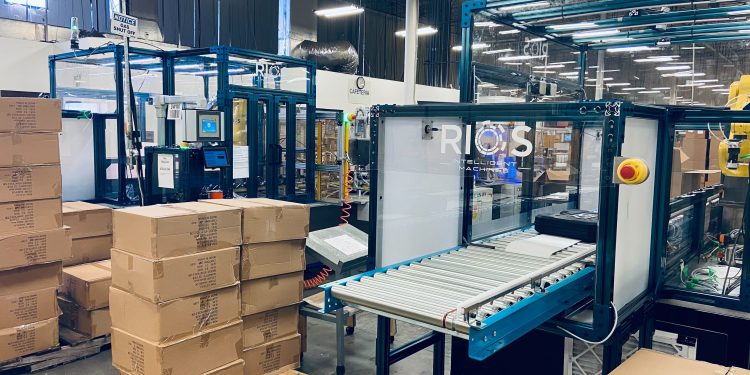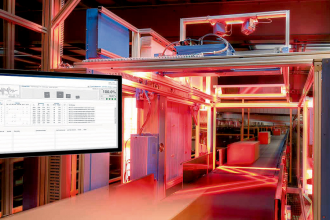How to Avoid Potential Pitfalls of Robotics Ownership

Robotics is becoming increasingly prevalent in manufacturing and warehouse settings. They can be a valuable addition to your operations, but there are some potential pitfalls to be aware of before taking the plunge into robotics ownership. In this guide, we’ll talk about who should own robotics and their maintenance and the pitfalls that can occur if ownership is not clear.
Pitfall #1: Maintenance confusion
One of the most common pitfalls of robotics ownership/maintenance is not having a plan for what happens when the robots break down. This can disrupt your operations and cause frustration among employees.
There are a few different schools of thought on who should own robotics within a company, and the fact that there is no widespread agreement means that everyone may have different assumptions as to who owns what. Some people believe that the engineering or IT department should be responsible for them. Others think that it should be the operations or maintenance team. Still, others believe that it’s a shared responsibility between departments.
Solution: Make ownership clear
To avoid this pitfall, develop a plan for what happens when the robots break down and who is responsible for fixing them before they are deployed in your facility.
There are a few factors to consider regarding which department is responsible for robotics. Engineering and IT departments tend to be more focused on the technology side of things, so they may be better equipped to deal with technical issues that arise with robotics. On the other hand, operations and maintenance teams are more focused on keeping things running smoothly on a day-to-day basis, so they may be better equipped to deal with issues that arise in terms of the actual use of robotics.
It is up to you to decide who will be responsible for your robotics, depending on your situation and the structure of your team. Regardless of what you choose, make sure that ownership is clear from the outset. Otherwise, you risk potential problems down the road.
Pitfall #2: Unmanageable maintenance and repairs
Owning robotics can be overwhelming and technically challenging in the beginning.
Even if you’ve designated owners on your team for regular maintenance and repairs, issues may come up that your engineering or maintenance teams don’t have experience with. Or they can become overloaded and fall behind on repairs. Even if you call a provider, there may be some down time while they get someone onsite.
When this happens, you run the risk of your robotics breaking down and being out of service for extended periods of time. This can lead to costly downtime and lost productivity.
Solution: Utilize RAAS
To minimize strain on your teams and offer them technical support, utilize RAAS (Robots as a Service). This is a business model in which robotics companies offer the use of their robot devices via a subscription-based contract.
A RAAS contract can help you save money on robotic maintenance and repairs, as well as provide you with access to 24/7 support. RAAS can also help companies keep track of their robotic assets and ensure that they’re being used effectively. Otherwise, companies run the risk of losing track of their robots or not getting the full value out of them.
For most manufacturing facilities, it makes financial sense to utilize RAAS when deploying robotics.
Pitfall #3: Out-of-control expenses
Introducing robotics to a business means more financially than just the cost of the robots themselves. There are also costs associated with installation, training, maintenance, and support.
Without planning and consideration in advance, these can be unexpected and lead to shock down the road. They can also slow down the implementation process or cause disruption in operations.
Solution: Consider total costs upfront
When bringing in robotics, it’s important to consider the Total Cost of Ownership (TCO). TCO includes not only the purchase price of the robots but also other costs to support and maintain them.
To get in front of surprises and possible budget issues in the future, make a list of expenses associated with robotics ownership based on various scenarios, including the installation phase, equipment breaking down, and potential future upgrades.
Doing a full evaluation of TCO before purchasing robotics allows you to have a full view of the budget you need, and also helps you calculate what your Return on Investment (ROI) on robotics ownership will be.
Make robotics ownership a success
Robotics can be a valuable addition to your business. There may be potential pitfalls, but you can avoid them by clearly defining who is responsible for maintaining the robots, utilizing RAAS, and considering the total cost of ownership upfront.
With these recommendations, you can deploy robotics in your facility with confidence and ensure that your facility gets the most out of its investment in robotics.
To read more about the Buyer’s Journey:
Your Guide To Successful Metrics For Automation Implementation
Orchestrating Workflows Within Your Distribution Center
Justifying Robotics In Your Operations
Robotics – The Buyer’s Journey, Part II
To learn more about The Robotics Group (TRG): https://www.mhi.org/robotics



